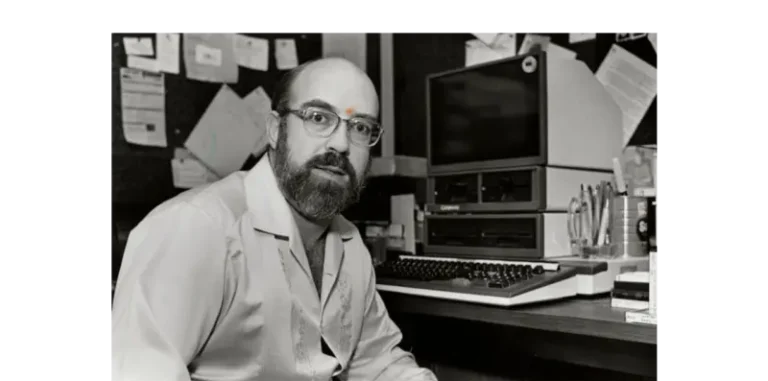How to Ease Writer’s Block
Turn off the phone? Write in longhand? Hide your notes? No single solution works for everyone, but here are 7 tips worth trying.
Writer’s block doesn’t just create anxiety. It also cuts creativity, two reasons why many writers say they need just the right conditions.
Actor Matthew McConaughey, who recently published his second book, “Poems & Prayers,” described his ideal writing process this way:
“I’ll go away again to this place where I go that has no internet connection, no cell service,” he told The Wall Street Journal. “I’ll take my printer and my paper. I’ll take my steaks, my coleslaw, my tequila, my water.”
Whatever works for one writer may not work for another one, like a vegetarian.
The goal
Fear is at the root of writer’s block, research shows: Fear of disapproval, making a mistake, or not being good enough. The way to overcome that fear is easily stated but getting there is another matter.
“When one feels writer’s block, it’s good to just keep putting things down on paper — ideas, knowledge, etc.,” Scott Barry Kaufman, a psychology professor at Columbia University, told author and poker player Maria Konnikova for a New Yorker story in 2016.
Or as John Steinbeck advised a friend and fellow writer more than 60 years ago, “Write freely and as rapidly as possible and throw the whole thing on paper. Never correct or rewrite until the whole thing is down.”
Making matters worse, a blocked writer may not be very inventive.
Research suggests that blocked writers “experience flagging motivation; they feel less ambitious and find less joy in writing. They’re also less creative,” Konnikova wrote.
Whenever we conduct a writing workshop for public relations and internal communications teams, writer’s block always comes up. Even if you never have writer’s block, you likely work with someone who has. We have seven tips to help get the creative juices flowing.
1. Write every day. If you infrequently do anything difficult, it tends to create anxiety. Public speaking is like writing in this regard.
Reporters are often quick writers. Although writing may account for a fraction of each day, they do it almost every day.
“You can’t go to an editor on a newspaper staff and say you have writer’s block today. It doesn’t work,” author Michael Connelly, a former police reporter, told the Los Angeles Review of Books 10 years ago.
Many public relations pros and internal communicators don’t write every day, so writing becomes a big thing. To get more practice, try to structure your job to write something that matters every day.
2. Write something, even if it isn’t for work. When the novelist Graham Greene was in his fifties, after he’d already published about a dozen books, he endured a “blockage,” as he called it.
He got out of it by writing down his dreams every day. The dream journal was private, not subject to fact-checking or editing.
“In that freedom from conscious anxiety, Greene found the freedom to do what he otherwise couldn’t: write,” Konnikova wrote.
3. Write while reporting. Like most reporters, Sarah Mervosh, a national correspondent with The New York Times, doesn’t wait to start writing until she’s done with her reporting.
“Mervosh assembles stories out of feeds — story chunks with quotes and descriptions — that she writes throughout the day as she gathers interviews,” according to a presentation she gave to the Alaska Press Club in 2021.
“‘You can create the system for yourself by writing feeds to yourself throughout the day,’” Mervosh said.
“When on deadline, Mervosh immediately writes up her stories in feeds and collects them in a single document. Not only does this help minimize time crunches at the end of the day, but having a patchwork of grafs ready can help defeat the anxiety of staring at a blank screen.”
4. Write in chunks. Even reporters who aren’t on daily deadlines like Mervosh divide up the writing into smaller pieces. This approach is like “write while reporting,” except for the timing. Writing while reporting can be a challenge for beginners.
This approach kicks in after your reporting is done, you look over your notes, and you’re stumped about where to start. Pick an easier chunk, a piece of background or an explanation or a technical term.
Sam Anderson, a staff writer with the Times’ magazine, and his editor have come up with names for his drafts, according to a Times report in 2022:
“Chunk Mayhem (‘It’s exactly what it sounds like’), Fusion Town (‘When the chunks start to fuse together’), Fusion City, then a typed Through-Draft.”
Writing by hand breaks up the routine of facing a computer screen. To help you get started, you may want to write just the beginning of a story by hand, not the entire piece.
5. Start with a story memo. Uncertainty of where the story is going can create writer’s block. Before reporting starts, we recommend writing a story pitch or story memo, which includes a first draft of the headline and first sentence.
Don’t aim for perfection in the memo’s headline and first sentence. Here’s how Saul Pett, a Pulitzer Prize-winning reporter who died in 1993, put it:
“We make a mistake when we’re younger. We feel compelled to hit a home run in the very first sentence. So we spend a lot of time staring at the typewriter. I’ll settle for a quiet single, or even a long foul, anything that gets me started.”
6. Write in longhand. Anderson and A.O. Scott, a critic at large for the Times’ Book Review, write their stories by hand. They are likely the few of reporters who do at the newspaper.
“Drafting by hand lowers the stakes, he said, because it doesn’t feel like ‘official’ writing yet, which helps him avoid writer’s block,” Anderson told the Times in that 2022 story.
Scott says writing by hand helps him briefly to forget the pressure of writing.
“It’s just me and the writing,” he told the newspaper. “You’re free of ‘What will editors think?’ or ‘What will readers think?’ or ‘How will this look in the paper or on The Times website?’”
7. Hide your notes. Writers sometimes get bogged down in the details, according to Jane Harrigan, a writing coach and former journalism professor at the University of New Hampshire.
Nearly 35 years ago, she wrote: “Notes are like Velcro. As you try to skim them, they ensnare you, and pretty soon you can’t see the story for the details.”
Her advice is to say to yourself: “The story is not in my notes. The story is in my head.”
You can fill in quotes and facts later. First, trust yourself to tell the story.
No cure?
Not every newspaper reporter escapes writer’s block. In 1949, syndicated columnist Walter Winchell famously asked sportswriter Red Smith if writing a daily column was “quite a chore,” according to Quote Investigator.
“Why, no,” Smith deadpanned. “You simply sit down at the typewriter, open your veins, and bleed.”
Tom Corfman wrote about a dozen versions of the first sentence to this story. He’s a senior consultant with Ragan Consulting Group, where he directs the Build Better Writer’s program.
Follow RCG on LinkedIn and subscribe to our weekly newsletter here.







